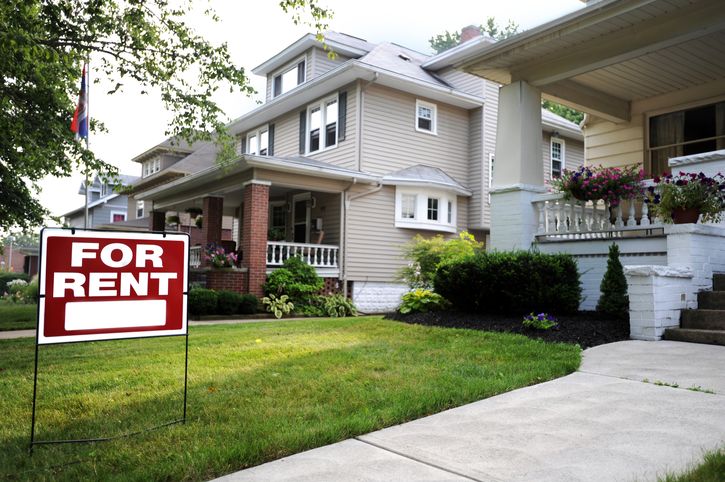
By STAN AUSTIN
More than 35 percent of U.S. households are renters, and industry measures show that the prices for renting an apartment or house are continuing to rise.
The prime reasons: job gains, wage growth and increased demand following the pandemic. Those factors reflect the historically tight labor market—with far more available jobs than workers to fill those positions.
Understanding the connection between rent inflation and the tight U.S. labor market is important for the public as well as for the Federal Reserve and other policymakers. That connection is explored in an Economic Bulletin article published in March by Kansas City Fed Senior Research and Policy Advisor Brent Bundick, Senior Vice President A. Lee Smith and Research Associate Luca Van der Meer.
Their study shows that rent inflation is more responsive to labor market conditions than to other components of inflation.
“Thinking about where inflation is now and where it might be going is kind of top of mind for policymakers,” Bundick said. “One of the things that we think about is ‘What are some of the underlying factors?’ With this article the point that we really wanted to make is that there’s this particular relationship between the tightness in the labor market—with very low unemployment and lots of job vacancies—and how that relates to rental inflation.”
Shifting pressures
The study shows how inflationary pressures in the U.S. economy have increasingly shifted in recent years from goods to services. Higher prices for goods were responsible for much of the initial rise in core Consumer Price Index (CPI) inflation in 2021 and early 2022. Although goods inflation has moderated somewhat since then, that decline has largely been offset by increasing price pressures in the services sector, the study states. As a result, core inflation remains elevated, with rent inflation being especially notable. All measures of rent inflation show increases from measures before the pandemic.
For example, before the pandemic, when overall inflation was near 2% in the United States, rent inflation was contributing about 1.5% to core CPI (Consumer Price Index) inflation. By the fourth quarter of 2022, that percentage had nearly doubled, to around 3%.
Meanwhile, the V/U ratio—the ratio of job vacancies to unemployment—was near “1” before the pandemic, meaning that for every available job there was roughly one unemployed person. However, more recently that number has hovered near “2,” indicating two available jobs per unemployed person.
“We have seen some easing in that tightness, and we have seen some moderation in rent inflation that has accompanied it, but we’re still pretty far from pre-pandemic levels,” Smith said.
Key elements
Increased demand, rather than changes in supply, is one of the main drivers of rent inflation.
“Growth in employment and wages, which vary with broader economic conditions, are key determinants of demand for shelter and, hence, rent inflation,” the economists wrote.
In May, U.S. unemployment stood at 3.7%. For civilian workers, wages and salaries increased 5% for the 12-month period ending in March 2023, according to the Bureau of Labor Statistics (BLS). That followed an increase of 4.7% percent for the 12-month period ending in March 2022. Moreover, the economy has added more than 4 million jobs over the last year. These labor market conditions are providing consumers with income growth to support spending on shelter as well as other goods and services.
Additionally, the economists point to the increase in remote work brought about by the pandemic and higher input costs for building and maintaining rental units.
The inflation picture
In early June, the rental search company ApartmentList.com reported that the average median rent in Kansas City was $1,151, up 4% from a year earlier.
Earlier in the spring, Smith pointed out BLS data showing that national rent inflation in March was running near 9% nationally and more than 7% for the Midwest region, which includes the Kansas City market and other parts of the Tenth Federal Reserve District. Both figures were more than double their pre-pandemic rates of inflation.
“The fact that the national figures are running ahead of the Midwest region underscores that rent inflation in some areas, such as Denver and the Mountain West, have been much higher,” Smith said. “This partly reflects pandemic-induced shifts in preferences for where people want to work—from home in desirable locales.”
Outlook for rents
Still, the Kansas City Fed economists noted, some of the pandemic factors that contributed to the surge in rents appear to be unwinding. One sign of this is Zillow’s measure of rent inflation. After running well above the official BLS measure of rent inflation, the Zillow rent inflation metric turned sharply lower. The Bank economists noted that some policymakers interpreted the decline in the Zillow measure as an indication that BLS rent inflation measures will soon peak as well.
However, the Economic Bulletin cautions that “a return to pre-pandemic rates of rent inflation could remain elusive.”
“What it means is that policymakers can’t assume that rent inflation is going to fall off organically,” Smith said. “It’s going to have to coincide with some re-balancing in the labor market.”
